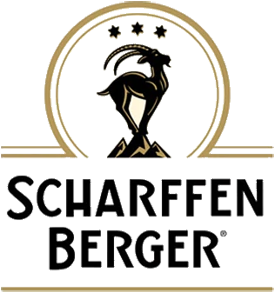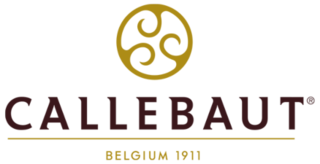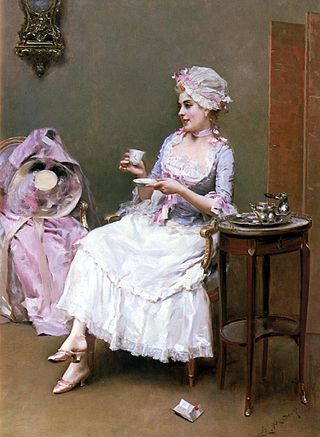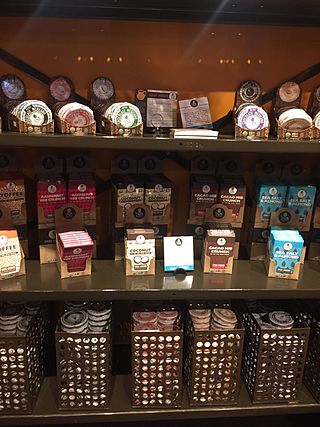Related Research Articles

Chocolate or cocoa is a food made from roasted and ground cacao seed kernels that is available as a liquid, solid, or paste, either on its own or as a flavoring agent in other foods. Cacao has been consumed in some form since at least the Olmec civilization, and the majority of Mesoamerican people, including the Maya and Aztecs, made chocolate beverages.

The cocoa bean or simply cocoa, also called cacao, is the dried and fully fermented seed of Theobroma cacao, from which cocoa solids and cocoa butter can be extracted. Cocoa beans native to the Amazon rainforest are the basis of chocolate, and Mesoamerican foods including tejate, an indigenous Mexican drink.

The kola nut is the seed of certain species of plant of the genus Cola, placed formerly in the cocoa family Sterculiaceae and now usually subsumed in the mallow family Malvaceae. These cola species are trees native to the tropical rainforests of Africa. Their caffeine-containing seeds are about 5 centimetres (2.0 in) across and are used as flavoring ingredients in beverages applied to various carbonated soft drinks, from which the name cola originates.

A chocolate bar or candy bar is a confection containing chocolate, which may also contain layerings or mixtures that include nuts, fruit, caramel, nougat, and wafers. A flat, easily breakable, chocolate bar is also called a tablet. In some varieties of English and food labeling standards, the term chocolate bar is reserved for bars of solid chocolate, with candy bar used for products with additional ingredients.

Hot chocolate, also known as hot cocoa or drinking chocolate, is a heated drink consisting of shaved or melted chocolate or cocoa powder, heated milk or water, and usually a sweetener. It is often garnished with whipped cream or marshmallows. Hot chocolate made with melted chocolate is sometimes called drinking chocolate, characterized by less sweetness and a thicker consistency.

Milk chocolate is a form of solid chocolate containing cocoa, sugar and milk. It is the most consumed type of chocolate, and is used in a wide diversity of bars, tablets and other confectionery products. Milk chocolate contains smaller amounts of cocoa solids than do dark chocolates, and contains milk solids. While its taste and texture have been key to its popularity, milk chocolate has historically also been promoted as a healthy food, particularly for children, and recent evidence has shown that it may provide antioxidant health benefits.

Coenraad Johannes van Houten was a Dutch chemist and chocolate maker known for the treatment of cocoa mass with alkaline salts to remove the bitter taste and make cocoa solids more water-soluble; the resulting product is still called "Dutch process chocolate". He is also credited with introducing a method for pressing the fat from roasted cocoa beans, though this was in fact his father, Casparus van Houten's invention.

Scharffen Berger is an American chocolate manufacturing company, which was a subsidiary of The Hershey Company after it had been acquired in 2005. Scharffen Berger was established as an independent Berkeley, California-based chocolate maker in 1996 by sparkling wine maker John Scharffenberger and physician Robert Steinberg.


Callebaut is a Belgian chocolate brand, owned by the Barry Callebaut group. It was founded in 1911 by Octaaf Callebaut in Belgium.

The history of chocolate began in Mesoamerica. Fermented beverages made from chocolate date back to at least 1900 BC to 1500 BC. The Mexica believed that cacao seeds were the gift of Quetzalcoatl, the god of wisdom, and the seeds once had so much value that they were used as a form of currency. Originally prepared only as a drink, chocolate was served as a bitter liquid, mixed with spices or corn puree. It was believed to be an aphrodisiac and to give the drinker strength. Today, such drinks are also known as "Chilate" and are made by locals in the south of Mexico and the north triangle of Central America. After its arrival to Europe in the sixteenth century, sugar was added to it and it became popular throughout society, first among the ruling classes and then among the common people. In the 20th century, chocolate was considered essential in the rations of United States soldiers during war.

Swiss chocolate is chocolate produced in Switzerland. While cacao beans and other ingredients such as sugar cane originate from outside Switzerland, the actual production of the chocolate must take place in Switzerland. Switzerland's chocolates have earned an international reputation for high quality with many famous international chocolate brands.

Scho-Ka-Kola is a German brand of chocolate consumed for its strong caffeine and kola nut mix. The chocolates have a caffeine content of about 0.2 percent, which is derived from the cocoa content of 58 percent and the addition of 2.6 percent roast coffee and 1.6 percent kola nut. The chocolate is divided into wedges held in a round metal canister. The red-and-white container design and recipe have changed very little since the original launch in 1936.

Andrea Illy is an Italian businessman. He is the Chairman of illycaffè S.p.A., a family coffee business founded in Trieste in 1933. He has additionally been Chairman of Altagamma since 2013.
The following outline is provided as an overview of and topical guide to chocolate:

The history of chocolate in Spain is part of the culinary history of Spain as understood since the 16th century, when the colonisation of the Americas began and the cocoa plant was discovered in regions of Mesoamerica, until the present. After the conquest of the Aztec Empire, cocoa as a commodity travelled by boat from the port of New Spain to the Spanish coast. The first such voyage to Europe occurred at an unknown date in the 1520s. However, it was only in the 17th century that regular trade began from the port of Veracruz, opening a maritime trade route that would supply the new demand from Spain, and later from other European countries.

Taza Chocolate is a Mexican-inspired stoneground, organic chocolate manufacturer based in Somerville, Massachusetts, United States. The factory was founded by Alex Whitmore in 2005 and is home to over 40 different products that can be found in 2,800 retail stores across the country.

A chocolaterie is a type of business which both manufactures chocolate confections and sells them, at the same location. It is usually a small family business, often operating at only one location. The word is of French origin, and shops named as such are common in France and Belgium. The term is also used to designate larger chocolate production companies, such as Chocolaterie Guylian, many of which started as smaller shops. This type of store operates in other countries, such as the US, Canada, the UK and Germany, sometimes using the French term. Stores which sell candies and chocolate but do not produce their own brand are called confectionery stores, or other names depending on the region. The related occupational term is chocolatier, though this term is also used sometimes to describe chocolateries, such as Godiva Chocolatier.
The chocolate industry in the Philippines developed after introducing the cocoa tree into Philippine agriculture. The growing of cacao or cocoa boasts a long history stretching from the colonial times. Originating from Mesoamerican forests, cacao was first introduced by the Spanish colonizers four centuries ago. Since then the Philippine cocoa industry has been the primary producer of cocoa beans in Southeast Asia. There are many areas of production of cacao in the Philippines, owing to soil and climate. The chocolate industry is currently on a small to medium scale.

Ruby chocolate is a variety of chocolate introduced in 2017 by Barry Callebaut, a Belgian–Swiss cocoa company. In development since 2004, it was patented in 2015 by inventors Dumarche et al. and assigned to Barry Callebaut under patent number US9107430B2. It was unveiled at a private event in Shanghai on 5 September 2017. It is marketed as the fourth type of chocolate alongside dark, milk, and white chocolate varieties and has a pink color.
References
- ↑ Lesley Chesterman (January 2003). Flavourville. ECW Press. pp. 82–. ISBN 978-1-55022-598-3.
- ↑ Louisa Knapp; Edward William Bok (2006). Ladies' Home Journal. Vol. 123, 5–8. LHJ Publishing, Incorporated.
- ↑ Rachel Sanderson (August 2, 2015). "Illycaffè sells €70m bond to secure coffee market share". Financial Times.
- ↑ Corby Kummer (February 15, 2006). "In Turin, Chocolate's the Champion". The New York Times.
- ↑ Simran Sethi (January 5, 2016). "Peak Mast Brothers (It Was Never About the Beards)". Huffington Post.
- ↑ Jordan Carroll (September 10, 2015). "CRAZY FOR CACAO: Taste's world-class chocolate is crazy delicious". Daily Herald.
- ↑ Nicholas Coldicott (January 29, 2010). "Chocolate bars for whisky lovers". Japan Times.
- ↑ Emily Jed (June 2012). "Coca-Cola Co. And IllyCaffè Roll Out RTD Coffee Drinks In Resealable Bottles". Vending Times.
- ↑ Kay Harwell Fernandez (August 23, 2013). "Follow the San Francisco trail of topnotch chocolatiers". USA Today. Archived from the original on 2015-11-30. Retrieved 2019-09-05.
- ↑ Jordan Carroll (September 10, 2015). "Crazy For Cacao - Taste's world-class chocolate is crazy delicious". Daily Herald.
- ↑ Heather Keleher (August 11, 2015). "Milan World Expo: Pavilions and Expectations vs. Reality". Huffington Post.